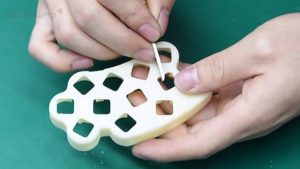Prototypes must be built to get a feel for the final version of the product or to test the marketability of the product with a small number of individuals. Prototyping or framework, on the other hand, can be expensive and time-consuming and need a lot of patience because you must build a small batch of products that will be used for testing.
Silicone molding or Silicone vacuum casting are two techniques that can be used to swiftly deploy prototypes at the lowest possible cost per batch. This enables any production and testing team to produce final versions of the product cost-effectively for small quantities of the product.
How Does It Work?
Various ways can be used to create the first repetition of a product when it is designed using computer-aided design (CAD) software. In silicone molding, a model of the final product is created using either stereolithography, CNC machining, or 3D printing techniques, depending on the product.
However, this enables the creation of a master model, which is then used to create a silicone mold that is based on the master model. The liquid silicone is injected into the chassis of this master model mold. The best part about the silicone mold is that it has been allowed to cure, it is sliced along its separation plan to be removed, and the master model is removed at the same time as well. This mold will enable a producer to produce a few more variations of the part using this design.
The silicone mold is used to make the prototypes, which are then molded using a low-pressure vacuum injection process carried out by a machine known as a vacuum cast. The silicone mold is filled with a material such as polyurethane, which is injected into it. While the part is being cured, the material is allowed to dry out completely.
The air is removed from the mold while the material that is being injected is pulled in by a vacuum machine. This is a significant advantage since it reduces the possibility of air bubbles accumulating inside the frame. Because air bubbles enhance the possibility of the material being fragile or damaged, it’s a source of concern.
Now once this curing process is completed, the silicone mold can be removed, and the procedure can be done several times more to generate additional prototypes for testing. However, a silicone mold can be easily reused, it does have a limited useful life.
Conclusion:
The quality of the original impression of silicon that was formed, as well as the geometry of the shape being molded, has a considerable impact on the mold’s lifespan and its longevity. If the mold is not utilized, it has a limited lifespan of 40 days before it begins to disintegrate and becomes unsuitable for manufacturing purposes. These are less expensive as compared to the metal molds, silicone vacuum casting have high heat resistance power, which allows them to be reused when high-heat materials are employed inside them, which will reduce waste.
